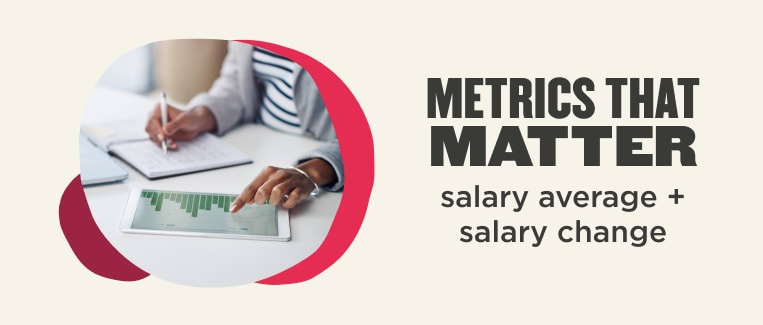We work hard for the money, don’t we?
It’s almost impossible to talk about work without bringing up salary. What we’re paid is supposed to be representative of our employer-defined worth—and, on a larger scale, how the employer values their workforce.
Salary average and salary change are both important HR metrics for measuring how the workforce is compensated as a whole, or in large groups. For companies competing for talent—we see you, EPD recruiters—salary average can help you understand your market position for recruiting. And for those fighting to retain employees, salary change can help you budget for raises and promotions on an annual or quarterly basis.
Let’s go into:
- How to calculate salary average and salary change
- How these metrics differ from other common salary measurements
- How to use Bob to measure salary average and salary change

Calculating salary average and salary change
Salary average and salary change can be measured by team, department, employee demographic, or the organization as a whole. Here’s how to measure both.H3: How to measure salary average
To calculate salary average, you’ll add up all the salaries in your chosen group and divide by the people in that group. It’s calculated based on the employee pay period and normalized relatively according to the chosen view period: monthly, quarterly, or yearly. And, because of the nature of the calculation, it only applies to those employed for the whole month.
Your calculation will look like this:
(sum of base salaries in specified group) / (amount of employees) = salary average
Average salary is especially powerful when compared with median salary. Median salary, or the exact midpoint dividing the top and bottom 50%, should be comparable to the average salary. Significant deviations point to large pay parity in your organization.
How to measure salary change
To calculate salary change, you’ll need to put in a little more effort. You’ll be comparing salaries from different intervals to understand how salaries have changed between those periods.
The calculation will look like this:

What salary average can tell you about your culture
Salary average is an important HR metric for understanding equity, diversity, and inclusion in your organization. By breaking down your salary averages by demographic (age, race, gender, ethnicity, sexual orientation, etc), you’ll be able to identify any existing parities in your organization that go beyond roles and their differences.
Recommended For Further Reading
Conclusion (and how to measure in Bob!)
Salary average and salary change are important financial metrics for many different aspects of your organization. By keeping an eye on these metrics, you’ll be able to make sure your people, from all teams and walks of life, are being paid what they deserve.
Want to learn how to measure these metrics in Bob?
To learn more about measuring salary average in Bob, check out this article. To learn more about measuring salary change in Bob, check out this article.


